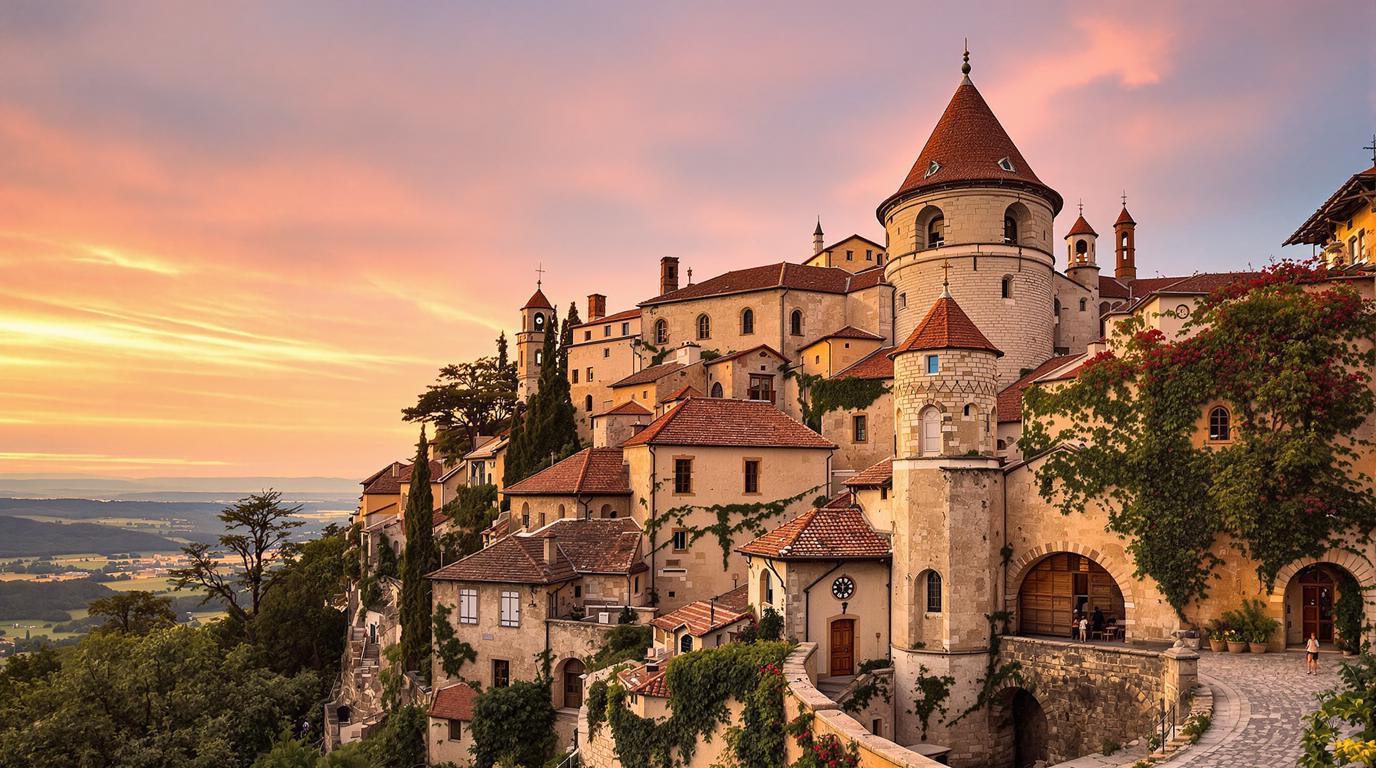In a landscape of famous French villages, Cardaillac stands as an undiscovered medieval treasure perched dramatically on a rocky ridge in southwestern France. This fortified village in the Lot department has quietly preserved its 13th-century character while avoiding the tourist crowds that flock to more celebrated destinations. With amber stone facades wrapped in climbing vines and narrow winding streets that whisper tales of knights and nobility, Cardaillac offers a genuine glimpse into France’s medieval past that few travelers experience.
A village frozen in medieval time
Walking through Cardaillac feels like stepping directly into a living history book. The village owes its name to the powerful Cardaillac family who built this fortress-village and left their architectural legacy in the imposing Round Tower and Clock Tower that still define the skyline. These remnants of ancient ramparts tell stories of a time when this strategic position protected the surrounding valleys.
Unlike some European architectural wonders that draw massive crowds, Cardaillac allows you to experience medieval France in peaceful authenticity.
The “scattered museum” experience
What makes Cardaillac truly special is its innovative “musée éclaté” (scattered museum) concept. Rather than confining history to a single building, the entire village functions as an open-air exhibition where artifacts from daily medieval life appear throughout public spaces.
“We wanted visitors to experience history where it happened, not behind glass cases,” explains Marie Lefebvre, local historian. “A clog maker’s workshop stands where it always did. The chestnut dryer remains in its original location. This is how we preserve not just objects, but contexts.”
Three distinct worlds in one village
Cardaillac reveals itself in three distinct sections: the original medieval fort area with its defensive towers, the church district with religious architecture, and Place Marcadiol featuring a meticulously maintained medieval garden. Each area offers a different perspective on village life centuries ago.
The fort area, with its commanding views of surrounding valleys, demonstrates why this location was so strategically valuable. On clear days, the panorama rivals views from Paris’s hidden hillside parks but with far fewer photographers jostling for position.
Local traditions preserved in amber stone
Cardaillac doesn’t merely display its history – it actively preserves traditional crafts and food production methods. The walnut oil mill demonstrates pressing techniques unchanged for centuries, while the chestnut dryer showcases how this staple food was preserved for winter months.
“My grandfather taught me to press walnut oil exactly as his grandfather taught him,” says Jean Mercier, one of the village’s craft demonstrators. “When visitors taste our oil, they’re connecting with generations of tradition.”
When to discover Cardaillac’s secrets
Sunday mornings light up with a vibrant local market where regional specialties and crafts take center stage. While summer brings pleasant temperatures, autumn visits offer spectacular foliage contrasting against the amber stone buildings. Unlike winter escape destinations, Cardaillac embraces its seasonal changes authentically.
Beyond the village walls
Cardaillac makes an ideal base for exploring the broader Lot region. Just 10 kilometers away lies Figeac with its medieval center, while the famous pilgrimage site of Rocamadour stands within an easy day trip. The region offers natural beauty reminiscent of hidden natural wonders but with distinctly French character.
The photographer’s dream
For photography enthusiasts, Cardaillac offers endless compositions. Dawn bathes the village in golden light, illuminating red-tiled roofs and creating dramatic shadows along narrow streets. The contrast between ancient stonework and vibrant greenery creates natural frames that capture the essence of rural French life.
While it may not have the turquoise waters of France’s hidden Atlantic islands, Cardaillac’s visual palette of amber, terracotta, and emerald creates equally compelling imagery.
In a world where authentic experiences increasingly give way to curated tourist attractions, Cardaillac stands as a rare opportunity to step genuinely into France’s medieval past, walking the same stone streets where knights and nobles once strode, all while having this historical treasure largely to yourself.
